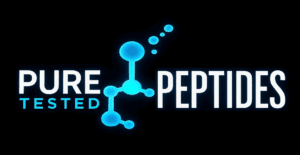Neuroendocrine & Innate Immune Research: Melanocortin, GABAergic Modulation, and Host Defense Peptides
Research-Only: Laboratory use; not for human consumption.
Melanocortin Agonists. Central melanocortin receptor engagement has been profiled for modulatory effects in sexual function research; pharmacology papers outline receptor targets and CNS circuitry (PMID: 12851303; PMC: PMC8788464; PubMed: 33455598).
GABAergic Peptidergic Modulation. Selank literature indicates positive allosteric modulation at GABA receptors and gene-expression changes relevant to neurotransmission (PubMed: 30255741; PubMed: 26924987; PMC: PMC5328971).
LL-37. The human cathelicidin peptide exhibits direct antimicrobial activity and immunomodulatory roles; reviews summarize membrane disruption, anti-biofilm effects, and cytokine modulation (PubMed: 19068548; PMC: PMC8227053; PubMed: 39643165).
Bench measurements include receptor binding assays, electrophysiology for GABAergic effects, antimicrobial MIC testing, and cytokine profiling in immune cell cultures. Browse the full catalog.

Methodological Notes. To contextualize mechanistic observations, laboratories typically
report experimental temperature, buffer composition, biological replicates, and blinding/randomization
practices for image analysis and Western quantification. Where possible, orthogonal corroboration is
included: for example, receptor pharmacology by radioligand binding or BRET assays combined with
downstream second messengers; structural endpoints by both live-cell imaging and fixed immunostaining;
and bioenergetics readouts by oxygen consumption/ECAR coupled to targeted metabolomics. These practices
increase reproducibility and allow meaningful comparison across peptide classes and batches in research-only
settings (PMC: PMC7350483).
Statistics & Reporting. Typical analyses include power calculations, pre-registered endpoints,
and multiple-comparisons adjustments for families of tests. Effect-size reporting (Cohen’s d or Hedges’ g),
confidence intervals, and transparent outlier policies enable precise interpretation of receptor- or
mitochondria-targeted peptide experiments. Collectively, these design elements improve the signal-to-noise
ratio in bench studies and inform subsequent assay selection. Browse the full catalog.
